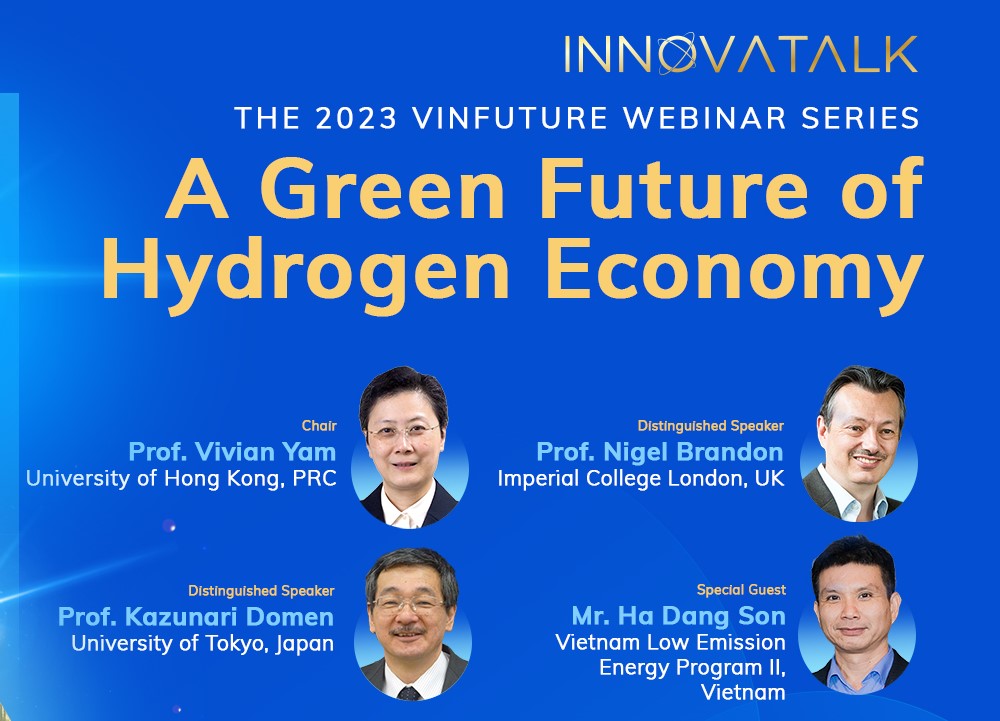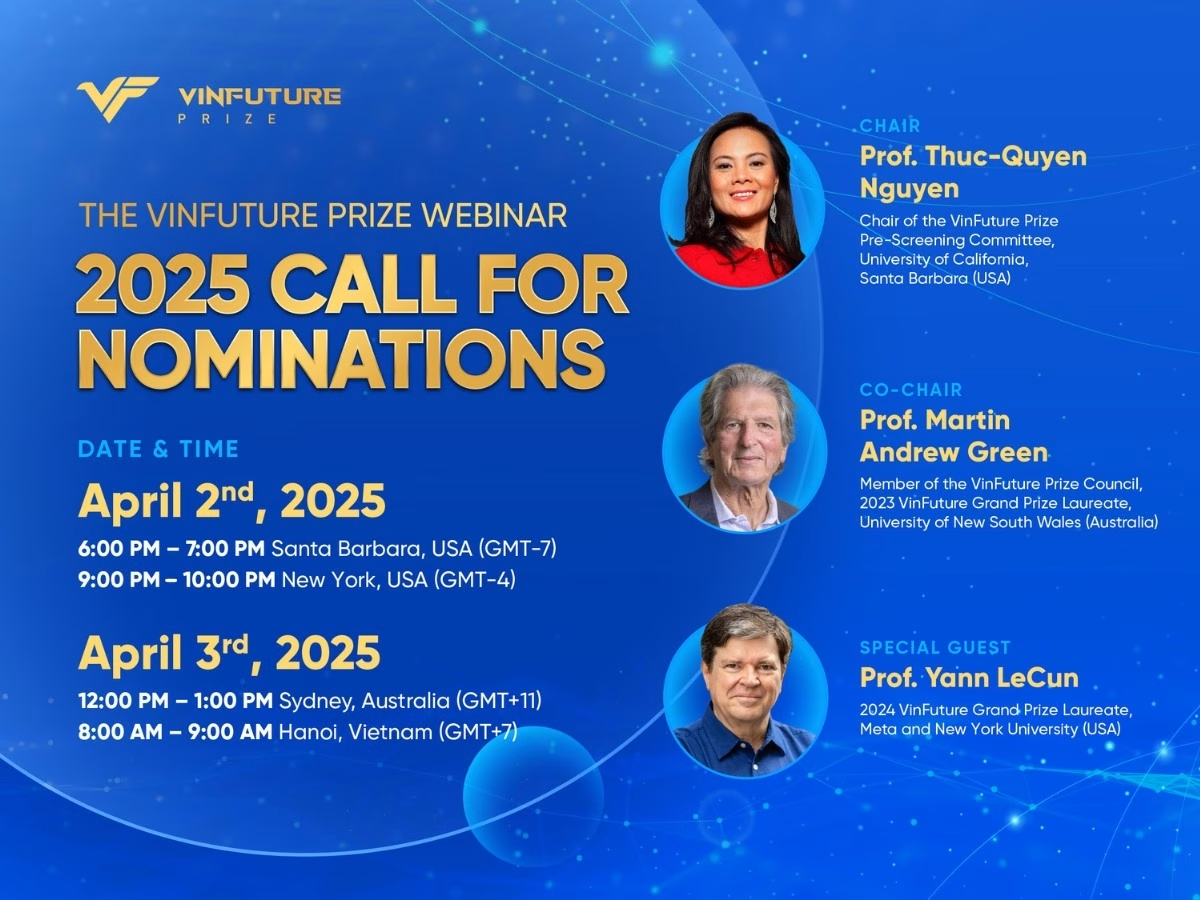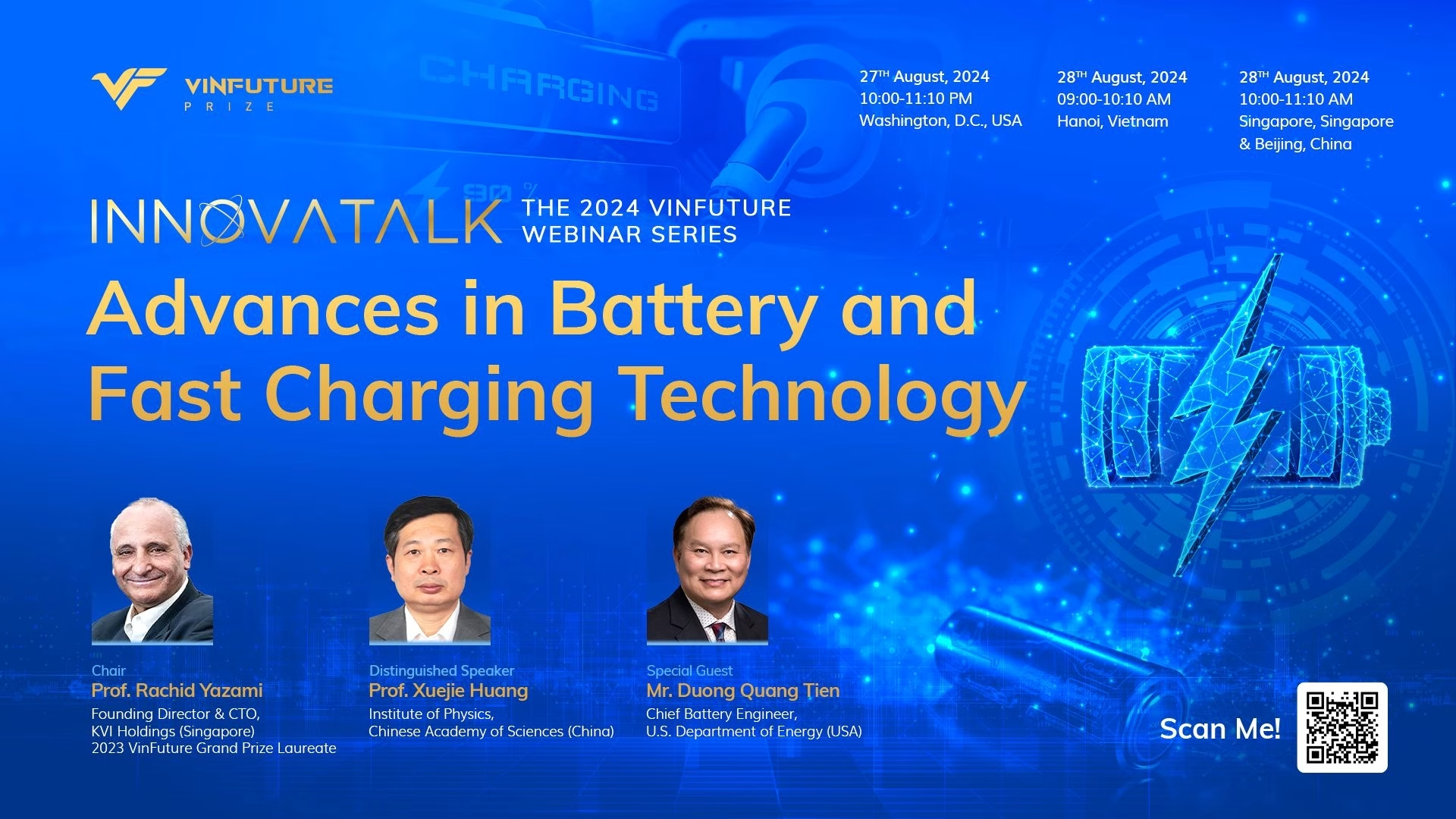- Register now: https://forms.gle/wpXycikEPWgf7w3r8
In the upcoming August InnovaTalk webinar, organized by the VinFuture Foundation, a panel of four hydrogen experts will convene to delve into the possibilities and obstacles linked to the hydrogen initiative. Furthermore, they will explore how this initiative aligns with Viet Nam’s commitment to achieving net-zero emissions.
Professor Vivian Yam, Wilson Wong Professor in Chemistry and Energy and Chair Professor of Chemistry at the University of Hong Kong, also a Member of VinFuture Prize’s Pre-Screening Committee, will be moderating the panel discussion. She will be joined by Professor Nigel Brandon – Dean of the Faculty of Engineering at Imperial College London, Professor Kazunari Domen at the University of Tokyo, and Mr. Ha Dang Son, Deputy Chief of Party at Vietnam Low Emission Energy Program II.
“Not all hydrogen is green”
“Obviously, hydrogen is a very attractive option because it’s not only an energy source but also an energy carrier,” said Professor Yam, “It means that hydrogen’s potential role has a lot of similarities with that of electricity.”
Hydrogen and electricity share several similarities. Whether utilizing hydrogen or electricity, both result in the absence of greenhouse gas emissions. There are no particulate emissions, sulfur oxides, or ground-level ozone produced in either case. When hydrogen is employed in a fuel cell, the sole emission is water. Burning hydrogen similarly yields only water as a byproduct, according to Professor Yam.
When it comes to the consumer side, both hydrogen and electricity are remarkably eco-friendly. Unfortunately, the similarities don’t end there. Professor Yam explains that frequently, at the initial production stages, both hydrogen and electricity carry a significant carbon dioxide (CO2) intensity due to their dependence on fossil fuel sources such as coal, natural gas, and oil. Consequently, the dilemma emerges of finding ways to surmount this issue by transitioning to renewable energy as the production source, along with employing diverse “color tags” for hydrogen.
As an illustration, discussions often revolve around variants such as black, gray, or brown hydrogen—derived from coal, natural gas, and lignite—unfavorable methods, as explained by Professor Yam. Presently, the focus has shifted to blue hydrogen, still sourced from fossil fuels, yet notable for its CO2 emissions reduction due to the implementation of carbon capture utilization and storage (CCUS) techniques. While essentially originating from fossil fuels, blue hydrogen effectively integrates carbon capture processes to facilitate the decarbonization endeavor.
The superior alternative remains green hydrogen, which harnesses renewable sources like electricity from photovoltaics and similar avenues.
Professor Yam also notes that hydrogen is slightly different from electricity, although people tend to speak of the two together. Hydrogen is a chemical entity, signifying that it functions not solely as an energy source but also as an energy carrier. Comprising hydrogen molecules, it differs from electricity, which involves electrons. The preference between hydrogen and electricity hinges upon the specific usage scenarios.
One of hydrogen’s advantages is its portability, enabling stable storage and transport, akin to the practices applied in the transportation of coal, oil, and natural gas. Nonetheless, a host of challenges related to cost, technical complexities, durability, and competitiveness also emerge, matters that will be addressed within the scope of the panel discussion.
In the webinar, the audience will also have the opportunity to gain insights from Professor Nigel Brandon (Imperial College London), a distinguished expert in the field of electrochemical technology, fuel cells, and electrolyzers. Professor Brandon will shed light on the challenges that necessitate resolution in the domains of fuel cell technology and electrolyzers.
As countries and companies seek to produce hydrogen using methods other than electricity, electrolysis has emerged as a method wherein sunlight and solar energy are harnessed to divide water into hydrogen and oxygen components. When engaging in solar production or the splitting of water to obtain hydrogen and oxygen, the employment of photocatalysts becomes essential. The question of how we can come up with an efficient photocatalytic system and mimic what nature has done through photosynthesis would be the discussion brought by Professor Kazunari Domen (University of Tokyo), a renowned expert in photocatalysis.
“No one-size-fits-all technology for all countries”
Emphasizing the essential need to grasp both global best practices and local nuances, Mr. Ha Dang Son, Deputy Chief of Party (Technical) at USAID Vietnam Low Emission Energy Program II, underscores the significance of aligning solutions with specific contexts.
“Specific technology or solutions which are applicable in one country may not have the same advantage in another country. That’s why the consideration of the country’s specific context is very important to make it workable when we try to disseminate such a solution or technology,” said Mr. Ha.
He also expresses optimism that the webinar will embrace stakeholders from diverse sectors, fostering a shared understanding of opportunities and challenges each sector faces. This collective recognition, he believes, will empower them to engage in the process, thereby facilitating the creation of a conducive environment for the implementation of such solutions and technologies.
“At each stage, it requires a lot of effort from the stakeholder, and it’s very important that we need to create a market for such a solution or technology so that it can survive or it can sustainably develop in the country and become the dominant technology in the country, to replace the conventional with what we know before, just like coal or natural gas, for instance,” added Mr. Ha.
“It’s really timely for us to understand a bit more about hydrogen’s potential and what sort of role it could play in terms of helping us in decarbonization, coming up with a cleaner, more secure and affordable energy future,” said Professor Yam.








